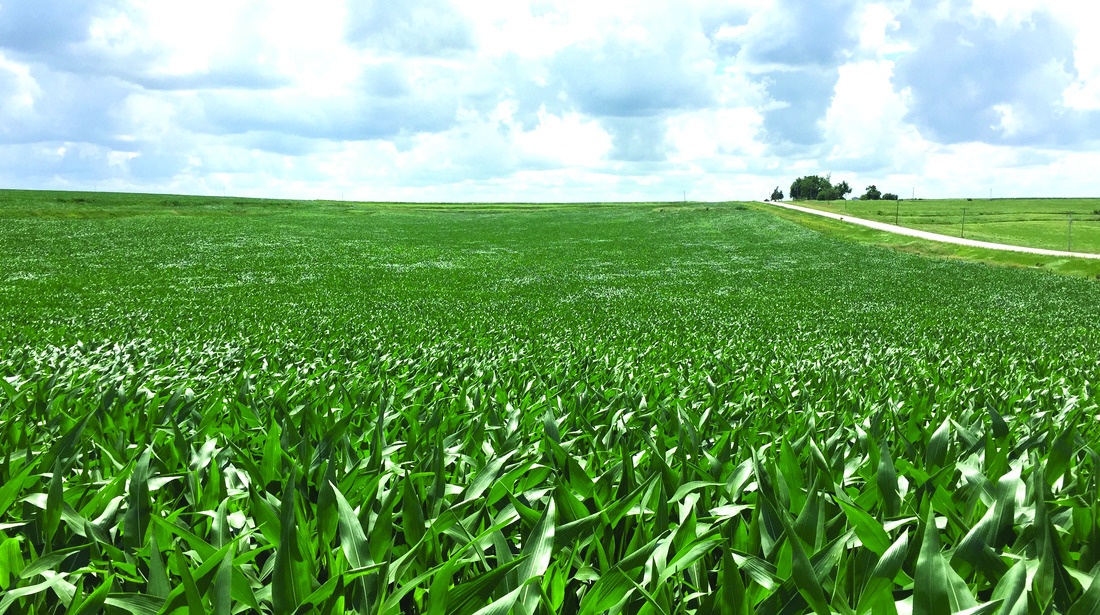Fireflies are lighting up the night skies. What does that mean for corn rootworm? Some believe the two are closely related.
“There’s an old rule of thumb that when fireflies are noticeable in the evenings, it’s time to start scouting for corn rootworm hatch.”
Tony Lenz, technical agronomist for Stine® Seed Company
While the correlation is still followed today, university extension experts recommend measuring corn rootworm egg hatch by growing degree days (GDD) accumulation.

The Ohio State University Extension notes peak egg hatch, or roughly 50% of the total hatch, occurs between 684 and 767 GDD accumulation.
“Many areas of the Midwest are within that range, and fireflies are present,” says Lenz. “So, regardless of the rule you follow, it’s time to start scouting for corn rootworm larvae and root feeding.”
The primary suspects
There are two types of corn rootworm that are prevalent in the Corn Belt: western and northern corn rootworm. While western corn rootworm may be the more dominant species in the Corn Belt, both can devastate yields. Both species increase in population each year but are typically more prevalent on corn-on-corn acres.
The 2023 Regional Corn Rootworm Monitoring Network Summary published by the Corn Rootworm IPM Regional Working Group states, “Fields with a history of corn rootworm are likely to have persistent populations, especially when continuous corn is grown.” This can be attributed to populations developing some resistance to Bt corn, a trait that works well in fighting the pests when crop rotation is in play.
Damage to crops
Corn rootworm can greatly damage crops and devastate yield potential. According to the Crop Adviser Institute, rootworms cause more than $1 billion in damage and control costs annually in the U.S. The larvae start feeding on the plant as soon as they hatch.
“Right now, most corn rootworm is in the larvae stage, where they’re feeding off the root structure of the plants,” says Lenz. “Crop damage may not be obvious for several weeks, so it’s critical to get in the dirt and see what lies beneath to determine the level of infestation.”
Specific issues that stem from corn rootworm larvae include goosenecking and lodging, stunted plants, and nutrient deficiency as the damaged roots make it harder for plants to uptake the necessary nutrients for survival. Once larvae mature into adult beetles, they move up the plant and can impact the pollination process as they feed off the plant’s silks.
Scouting for larvae versus beetles
“There are a few methods of scouting for corn rootworm in the larvae stage,” notes Lenz. “First, you need to dig up the plant, being careful to keep the entire root intact. Then, you can determine larvae population thresholds by performing a float test. During or following the float test, you need to review damage to the root structure by hand-sorting through the roots to see if there is any notable injury.”
University extensions have numerous great resources to help detect the severity of root injury, including the Interactive Node-Injury Scale from Iowa State.
For the float test, growers must dig up a plant and place the roots in a bucket of water to break up the soil from the root structure. From there, larvae should float up to the top of the water. Experts recommend adding salt to the water so they float more easily. This should be done randomly in several areas of the affected field. Then, you record the number of larvae from each plant selected and average it to determine your threshold. You can lean on a university extension specialist or local agronomist to determine an estimated percentage of yield loss based on infestation.
Once larvae mature into adult beetles, scouting is somewhat an easier process as the beetles will be present on the plant’s leaves and silks. Lenz notes the best time to capture adult beetles is in the morning or late afternoon when they’re feeding.
It’s also important to know which beetle you’re dealing with. Both are similar in appearance, with a few visible differences.
“Western corn rootworms are typically yellow or green and have black striping on their wings,” says Lenz. “Northern corn rootworms are brown or light green with no distinguishable marks.”
A good way to know your numbers is to use sticky traps throughout the field to capture, calculate and measure beetle populations.
According to the Corn Rootworm IPM Regional Working Group, if you catch more than two beetles per trap per day, you have a problem and need to switch up management tactics where possible.
Management strategy
“Crop rotation will always be the best management practice to navigate corn rootworm,” says Lenz.
In-season mitigation strategies are a bit tougher to navigate. Options can include a foliar-applied insecticide, but it can’t be used as a long-term solution.
“Depending on your level of infestation, you may have the opportunity to spray the beetles to knock the population down,” says Lenz. “But that’s not going to solve the problem. What you really want to do is get a better management plan together for the next crop season.”
Even extension professionals agree that using different tactics to manage corn rootworm may not pay off.
Lenz notes while corn rootworm is showing some signs of resistance to Bt traits, they are still a promising option if used with crop rotation.
“Stine offers Duracade-based hybrids that are an effective tool to help manage corn rootworm populations,” says Lenz. “You can find great value in talking to your local Stine agronomist or sales rep about these options.”
Related Articles
-

Start strong with Stine®: Maximizing your 2026 potential
January 2026 in Agronomy
-

Stine® to offer Syngenta’s Victrato® soybean seed treatment in 2026
December 2025 in Agronomy
-

Use Stine’s XP® seed treatments to prevent early injury to your crops
December 2025 in Agronomy
-

Understanding Stine’s enhanced oil profile soybeans
December 2025 in Agronomy



